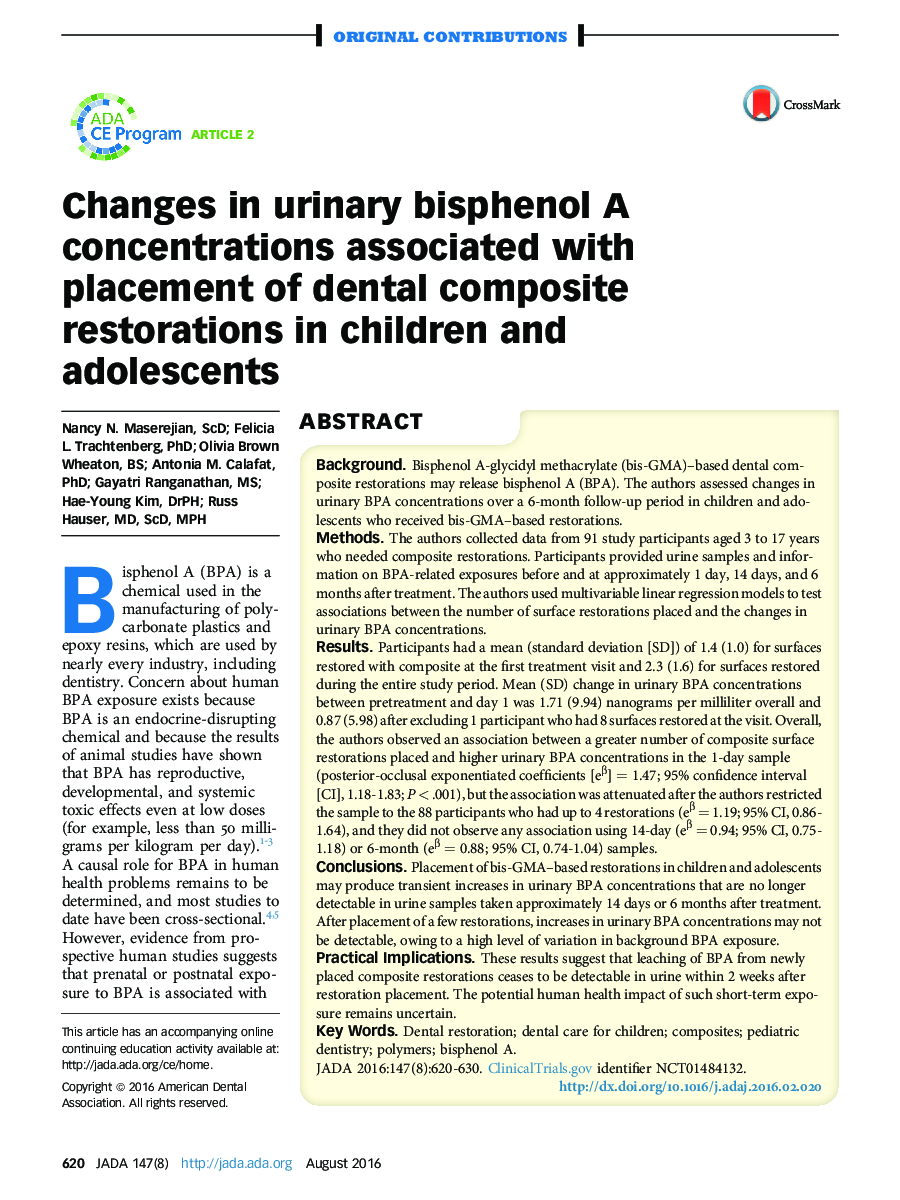| Article ID | Journal | Published Year | Pages | File Type |
|---|---|---|---|---|
| 3136519 | The Journal of the American Dental Association | 2016 | 11 Pages |
BackgroundBisphenol A-glycidyl methacrylate (bis-GMA)–based dental composite restorations may release bisphenol A (BPA). The authors assessed changes in urinary BPA concentrations over a 6-month follow-up period in children and adolescents who received bis-GMA–based restorations.MethodsThe authors collected data from 91 study participants aged 3 to 17 years who needed composite restorations. Participants provided urine samples and information on BPA-related exposures before and at approximately 1 day, 14 days, and 6 months after treatment. The authors used multivariable linear regression models to test associations between the number of surface restorations placed and the changes in urinary BPA concentrations.ResultsParticipants had a mean (standard deviation [SD]) of 1.4 (1.0) for surfaces restored with composite at the first treatment visit and 2.3 (1.6) for surfaces restored during the entire study period. Mean (SD) change in urinary BPA concentrations between pretreatment and day 1 was 1.71 (9.94) nanograms per milliliter overall and 0.87 (5.98) after excluding 1 participant who had 8 surfaces restored at the visit. Overall, the authors observed an association between a greater number of composite surface restorations placed and higher urinary BPA concentrations in the 1-day sample (posterior-occlusal exponentiated coefficients [eβ] = 1.47; 95% confidence interval [CI], 1.18-1.83; P < .001), but the association was attenuated after the authors restricted the sample to the 88 participants who had up to 4 restorations (eβ = 1.19; 95% CI, 0.86-1.64), and they did not observe any association using 14-day (eβ = 0.94; 95% CI, 0.75-1.18) or 6-month (eβ = 0.88; 95% CI, 0.74-1.04) samples.ConclusionsPlacement of bis-GMA–based restorations in children and adolescents may produce transient increases in urinary BPA concentrations that are no longer detectable in urine samples taken approximately 14 days or 6 months after treatment. After placement of a few restorations, increases in urinary BPA concentrations may not be detectable, owing to a high level of variation in background BPA exposure.Practical ImplicationsThese results suggest that leaching of BPA from newly placed composite restorations ceases to be detectable in urine within 2 weeks after restoration placement. The potential human health impact of such short-term exposure remains uncertain.
